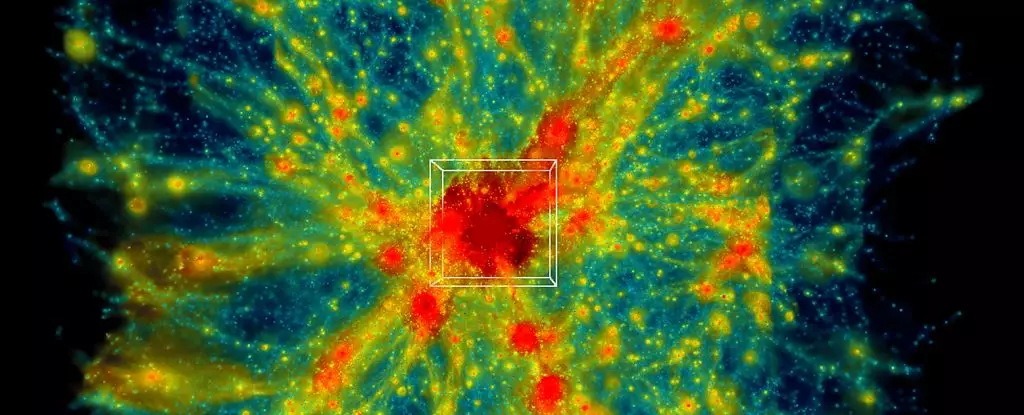Astrophysics is an ever-evolving field, constantly challenging our understanding of the cosmos. The latest breakthrough comes from the Oak Ridge National Laboratory (ORNL) in the United States, where researchers have achieved what may be the most comprehensive astrophysical simulation of the Universe to date. Utilizing the Frontier supercomputer, the team recently simulated an extraordinary volume of space, with insights that promise to enhance our grasp of cosmic evolution, the behavior of dark matter, and the intricate tapestry of the Universe itself. Launched in November 2024, this colossal simulation, named ExaSky, integrates 9,000 computing nodes to explore areas of the Universe more than 31 billion cubic megaparsecs in size.
At its core, the ExaSky simulation aims to bridge the two foundational components of our Universe—dark matter and atomic or conventional matter. Dark matter, which interacts primarily through gravity, remains one of the cosmos’s most enigmatic constituents. In tandem with conventional matter, it plays a pivotal role in shaping the large-scale structure of the Universe. As physicist Salman Habib from Argonne National Laboratory articulately points out, researchers must simulate not only gravity but also various astrophysical phenomena such as gas dynamics, star formation, the emergence of black holes, and the birth of galaxies. This unique blend of physics is often referred to as cosmological hydrodynamics simulations, and therein lies the complexity that scientists contend with.
When we observe the night sky, we are not merely looking at a moment in time; rather, we are gazing back through billions of years. The evolution of cosmic structures occurs over vast time scales, making real-time observation a Sisyphean task. This is where simulations become invaluable—they allow scientists to manipulate time, fast-forward events, rewind history, and alter spatial perspectives to unravel the mysteries of universe evolution. However, this elaborate process is anything but trivial; it demands sophisticated mathematical frameworks and supercomputing power. Challenges abound, such as the need to balance computational efficiency with the richness of physical detail, often leading to the omission of essential variables in prior simulations.
Historically, investigations of cosmic phenomena were restricted to simpler models often based solely on gravitational interactions. The size of the simulated volume was also constrained, limiting the depth of insights gleaned from such studies. Habib highlights the ambition of the ExaSky project, emphasizing that significant progress has been made in refining algorithms and harnessing advanced computing capabilities. This culminated in leveraging the Frontier supercomputer—formerly the world’s fastest—to expand the scale of astrophysical simulations in previously unimaginable ways.
ExaSky, while representing just a minute proportion (0.001 percent) of the Universe, opens avenues for understanding cosmic phenomena by allowing direct comparisons with contemporary astronomical surveys, such as those conducted by the Rubin Observatory in Chile. This not only enhances the relevance of the simulation results but also lays the groundwork for future discoveries in cosmic science.
As the research team anticipates the ramifications of their findings, the true impact of ExaSky could likely reach far beyond astrophysical circles. The infusion of exascale computing power into cosmic simulations provides a transformative platform for deciphering the implications of dark matter, elucidating the formation processes of various astronomical entities, and accelerating our overall comprehension of the Universe’s fabric. Each data point from this extensive simulation could help physicists test existing theories and confront burgeoning questions, ultimately leading to refined models and improved predictive capabilities.
Furthermore, the advancements in simulation techniques and computational prowess herald a new era of exploration in cosmology, where scientists can now begin to probe answers to lingering questions. How do galaxies evolve? What is the interplay between different cosmic components? As we continue to harness tools like ExaSky, our quest to answer these questions increasingly becomes not just a possibility, but a reality. The cosmos, long shrouded in mystery, is poised to relinquish some of its secrets, allowing future generations to understand the Universe in ways that were once relegated to the realm of dreams.


Leave a Reply